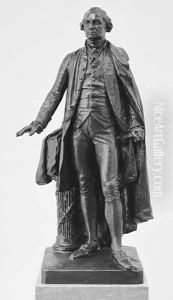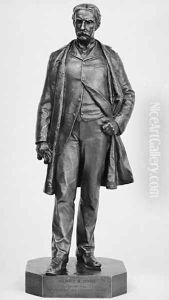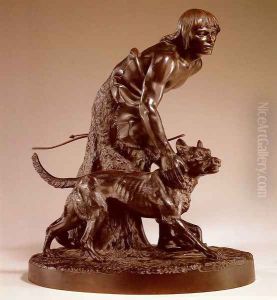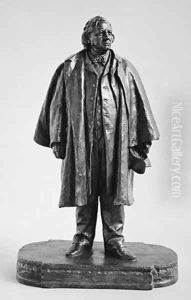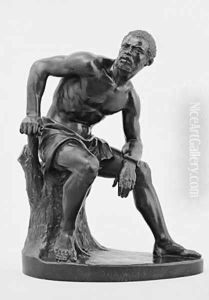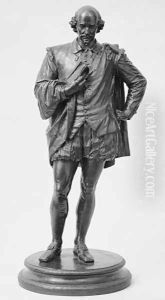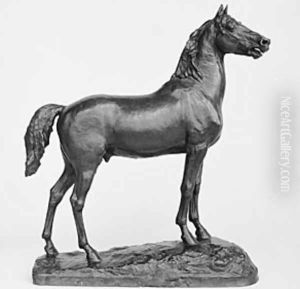John Quincy Adams Ward Paintings
John Quincy Adams Ward was an American sculptor, born on June 29, 1830, in Urbana, Ohio. He grew up in a time when America was still shaping its cultural and artistic identity. Ward showed an early interest in the arts and began his formal training under the tutelage of a prominent sculptor of the time, Henry Kirke Brown, after moving to Brooklyn, New York, in 1850.
Ward's early works already reflected the traits that would characterize his career: a commitment to naturalism, a focus on American subjects, and an interest in expressing character and emotion through sculpture. He became known for his dignified portrayals of American figures and themes, often depicting political leaders, cultural icons, and allegorical figures. In 1861, Ward received his first major commission for the statue of The Indian Hunter in Central Park, which established his reputation.
Throughout his career, Ward was an advocate for American art and artists. He was a founding member of the National Sculpture Society and served as the president of the National Academy of Design for many years. Ward's contributions to the field of sculpture were significant during a period when American art was striving to find its own voice, separate from European traditions.
One of Ward's most significant works is the George Washington statue, standing on the steps of Federal Hall in New York City, unveiled in 1883. This piece exemplifies his ability to combine realistic portraiture with idealized dignity, a hallmark of his sculptural style.
Ward's influence extended beyond his own creations. He was a mentor to younger artists and a key figure in the American art community, advocating for public art and the importance of national artistic identity. Ward continued to work and sculpt well into his later years, reflecting a lifelong dedication to his craft.
John Quincy Adams Ward passed away on May 1, 1910, in New York City. His legacy is preserved in the many statues and public monuments he created, which continue to be appreciated for their craftsmanship and historical significance. His work remains a testament to the power of sculpture to capture both the essence of individual character and the spirit of a burgeoning American nation.
